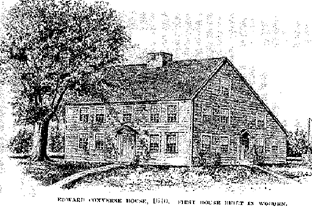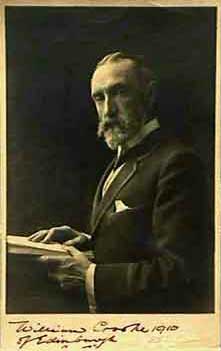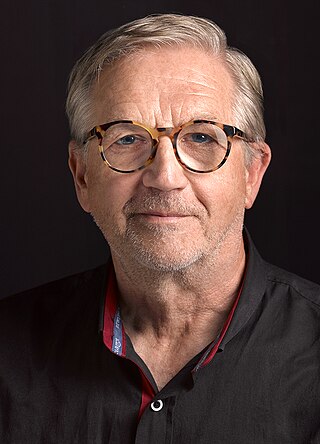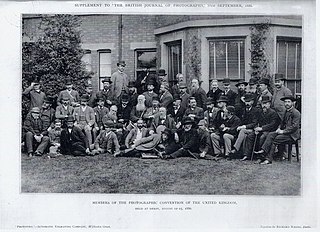
The Derwent is a famous river in the county of Cumbria in the north of England; it rises in the Lake District and flows northwards through two of its principal lakes, before turning sharply westward to enter the Irish Sea at Workington

London Apprentice is a village in south Cornwall, England, UK, on the banks of St Austell River in the Pentewan Valley approximately two miles (3 km) south of St Austell.
Robin Ernest William Flower was an English poet and scholar, a Celticist, Anglo-Saxonist and translator from the Irish language. He is commonly known in Ireland as "Bláithín".

Deacon Edward Convers was an early Puritan settler in the Massachusetts Bay Colony, and was one of the founders of Woburn, MA.

Agbrigg is a suburb of the city of Wakefield, West Yorkshire, England.
David McKellop Hodge was an attorney and interpreter for the Creek Nation, and was politically active. He became an orator and a leader on the Creek Nation Council at Muskogee, the capital.

Robert P. Bush was an American physician, soldier and politician.

William Crooke (1848–1928) was a professional photographer with a studio in Edinburgh.
Two of the best-known portrait photographers in England [sic Britain], William Crooke of Edinburgh and Walter Barnett of London sailed on December 17 for a six weeks' tour of the United States, during which they plan to visit some of the leading professionals of New York, Philadelphia, Baltimore, Washington, Pittsburg, St Louis, Chicago, Milwaukee, Niagara Falls, Buffalo, Rochester, Boston, and other places.
These gentlemen were asked by some of their American friends to bring collections of their portrait work.
Accordingly, Mr Crooke will have with him about sixty of his large pictures, made within the last few years, many of which have been shown at the exhibitions of the Royal Photographic Society and the Salon.

Peter Dazeley known as Dazeley, is a British photographer living and working in London, known for fine art, advertising, anamorphic and nude photography, as well as flower photography.

The Photographic Convention of United Kingdom (PCUK) was founded in 1886 and held its first convention in the city of Derby, England, in August of that year.

William England was a successful Victorian photographer specialising in stereoscopic photographs.

Richard Keene was an early Derbyshire photographer. He was a founding member of The Derby Photographic Society in 1884 and the Photographic Convention of the United Kingdom in 1886 as well as being an early member of The Linked Ring.
William Bradford (1590–1657) was the governor of Plymouth Colony for most of his life. Descendants of William Bradford, some of whom are listed here, have achieved noteworthy standing in numerous fields.

From roughly 1860 to 1920 painted photography backdrops were a standard feature of early photography studios. Generally of rustic or quasi-classical design, but sometimes presenting a bourgeoisie trompe-l'œil, they eventually fell out of fashion with the advent of the Brownie and Kodak cameras which brought photography to the masses with concurrent changes to public sensibility. Inasmuch as they were produced for six decades by local artisans, they can provide important clues to the provenance of old family photographs for genealogical research, and their staged influence lives on in "old-timey" photography sets. Furthermore, they are of some interest to specialized collectors of the history of photography.
Ralph Hunt was a founding colonist of what is today known as Long Island.

T G Purvis was a British marine artist. A sea captain who turned to painting, he was a prolific painter of ship portraits and marine scenes from the early 1890s to the late 1920s. His paintings can be found in a number of public collections, notably the National Maritime Museum and the National Museum of Wales.

Easton Methodist Church is a Methodist Church in Easton, on the Isle of Portland, Dorset, which was built in 1906–07. The church, along with its former manse and boundary walls, has been a Grade II* Listed since May 1993. Its church hall was formerly a Wesleyan school, dated 1878 on the porch. The school, with the boundary wall, was designated Grade II in May 1993. The church remains active to date, as part of the Portland Methodist Circuit – which involves two churches; Underhill Methodist Church and Easton Methodist Church.
Ralph Ironside was Archdeacon of Dorset from 1671 until 1683. He was the son of Ralph Ironside, rector of Long Bredy, Dorset, and the younger brother of Gilbert Ironside, Bishop of Bristol. He was educated at Wadham College, Oxford and later held incumbencies at Netherbury and Long Bredy. He died on 5 March 1683, being buried at Long Bredy.

Francis Herbert Dufty II, who was also known as Frank Dufty, was an English-born, Australian photographer, known for his photographs of Fiji. Dufty's contribution to Fiji was of primary importance in the 1870s, and he was one of Fiji's most significant, early photographers.

Alfred William Buchanan Dufty (1858–1924) was an English-born Australian photographer.















